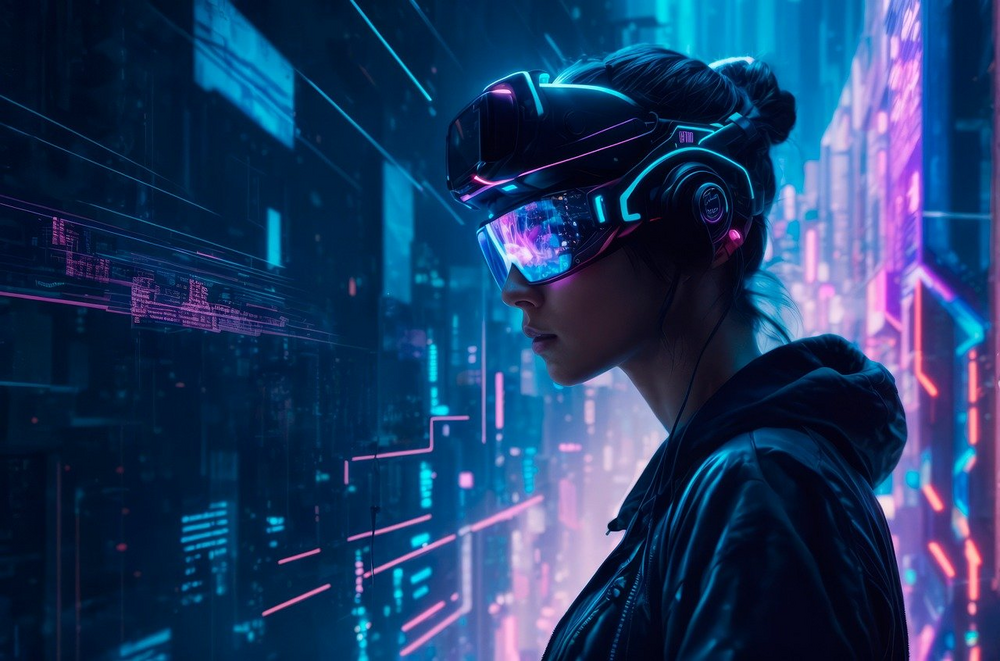_This article is part of a blog series on New technologies, like virtual design and visualization, that are often used in construction project management. When we discuss these technologies, the term used is Virtual Design and Construction (VDC).
Firms in the construction industry that want to stay competitive in a rapidly changing environment need to know how immersive technologies are changing the way we do business, so their employees are more efficient and effective.
Immersive technologies help identify and resolve potential design issues, pinpoint risks, and visualize not-yet-built assets from a 3D drawing before, during, and after the construction phase, saving time and money.
Up to now, hardware has been limiting the use of immersive technologies in the construction industry.
Apple Vision Pro launched, but there aren't yet valuable business-cases or great experiences to justify spending so much money on the hardware.
It was too expensive for most people at launch time, despite expectations it would be affordable.
Immersive technology, combined with BIM software, can simulate or supplement the physical world in a virtual environment. The technologies are virtual reality (VR), augmented reality (AR), and mixed reality (MR).
We are used to blueprints, 2D renderings, and scale models to visualize a design, but they do not offer the same experience provided by immersive technologies.
Virtual Reality
VR is mainly used in the design and construction phases by architects to intuitively replicate the experience of a building design, for all stakeholders on a construction project, including the clients. You can see what a building will look like and how it would feel to walk in it.
Augmented Reality
AR is finding a role in construction, it allows you to map a digital construction and superimpose it onto the physical world.
For instance, it could be useful in maintenance to find where a leaking pipe or a faulty electrical cable is precisely located before digging into walls.
Mixed Reality
MR is in its infancy, but will develop quickly once the Apple hardware is available. MR is very similar to AR but is aware of the users’ physical surroundings.
Immersive Technology
In AEC, the technology is still in its infancy. It allows professionals to make presentations to clients where they can feel the space of a building that is not yet built.
You can then review the projects' progress with your clients.
This allows them to move around the building, reflect on the changes they want to implement, watch the results of the required changes happening in real-time, and make sure they match their requirements.
Collaborating with all stakeholders to detect defaults before the construction even starts and avoid unnecessary costly reworks may speed up the design and construction processes to deliver the project on time.
Making the best virtual decisions during the design process may reduce travel time from engineers and architects to construction sites.
The accessibility of VR tools and applications integrated into BIM has a lot of potential, unfortunately, its adoption is slow.
A few barriers must be removed from both the technology and management perspectives. The main hurdles are communication and collaboration at an early stage of a construction project between the various design, construction, operation, and maintenance teams.
VR and AR can provide additional capabilities for extended reality (XR), providing an immersive and interactive experience with a new and different kind of visualization, helping you improve and streamline your processes during the design phase.
Using automated processes and smart technologies, such as modern communication tools, the Internet of Things (IoT), artificial intelligence, or big data integrated in one system, improves your profitability. They help reduce errors and waste, or rework and accelerate the construction.
Various immersive technologies have different specificities and interactions, allowing you to benefit from the advantages and overcome the limitations as discussed below.
Immersive Technology uses

AR streamlines the construction processes
In AR apps, you can visualize and describe the outside world by projecting real-time images onto the real world.
This allows you to detect errors early in the design process. As a result, you will avoid waste and errors in the construction process, reducing costs.
By collaborating, you help your project teams troubleshoot problem areas and understand where everything must be built; you can easily make changes before, during, and after the project is built in.
For example, floor plans designed in BIM and interfacing with AR applications have been alive since 2016.
VR Changes Construction Processes
Increased demand for building efficiency and pressure on architects and designers to identify issues early, justify using VR to review your designs.
A BIM model uploaded in immersive VR headsets helps architects and designers get a sense of space before the building physically exists, to spot errors early, and construct better quality buildings.
VR also allows you to make a more compelling case when bidding for a new project, taking all stakeholders on a virtual tour of the future space.
Key Use Cases

Project planning and preparation
BIM combined with immersive technology can help you build an interactive model of a construction project to show clients from the outset, and you can align the construction requirements with your client’s.
Understanding data
Immersive technology helps users to access and visualize.
For example, you can increase your productivity with HoloLens by displaying the physical dimensions of space, including them in BIM for accurate visualization, and improving the quality by reducing the construction process.
Microsoft has discontinued the production of its HoloLens 2 headset. You can still actively use the technology for various applications.
Streamlining Processes
AR/VR technology can streamline efficiency and improve team collaboration during a project. AR and VR models can now be rapidly and easily shared across the team, wherever they are.
For instance, you can view 3D models of physical environments on your smartphone or tablet and optimize BIM models by getting data from IoT sensors in real time.
Touring Pre-Built Facilities
BIM drawings and immersive technologies allow the users to tour their new facility even before the ground has been broken, demonstrating how they can fit on the construction site.
It allows project managers to visualize how everything fits together, on-site and to scale, before they order materials or calculate the work required for installation.
On-site revision allows architectural discrepancies to be detected. High costs and delays are avoided by promptly adapting to the changes.
Training
Staff can familiarize themselves with the controls and operations of heavy machinery in a safe environment.
Luffing Tower Crane created a training simulator for crane operators.
This direct learning method raises safety awareness, improves safety, and delivers intuitive training.
Using simulation can also avoid human costly mistakes, shorten construction timelines, boost collaboration, and enhance training and education to produce better quality construction.
In Conclusion

Using immersive technologies in construction offers numerous benefits.
These include better safety, greater collaboration, enhanced planning, and improved efficiency.
They also allow improved training and education, better project control, and waste reduction.
Driving Vision's technology diagnostic looks at the best way to incorporate new technology into your workflows and how to move your organization to the use of immersive technology so you can open new possibilities for your daily planning tasks.
The technology appraisal report will help you to explore what investment is required to improve your projects’ productivity and collaboration, as well as the ROI you can expect.
Implementing BIM can be daunting, but Driving Vision is here to help you at the pace you are comfortable with. Get started by getting in touch now





